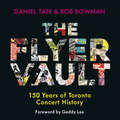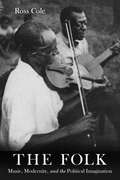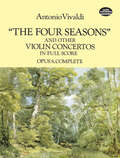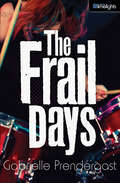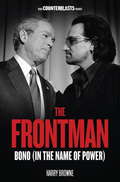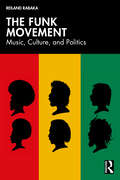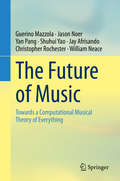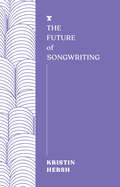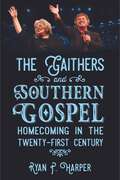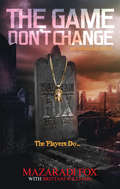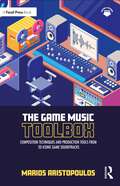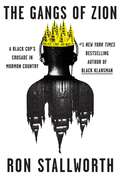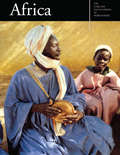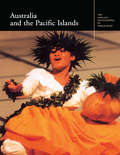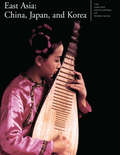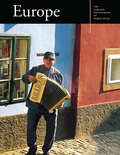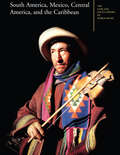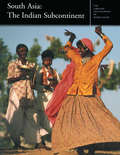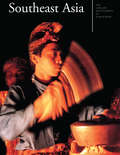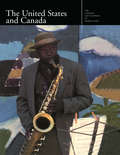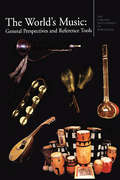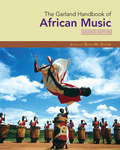- Table View
- List View
The Flyer Vault: 150 Years of Toronto Concert History
by Daniel Tate Rob BowmanA visual tour de force showcasing Toronto’s vast concert history. “The Flyer Vault book helps bottle the lore, bringing me a little bit closer to my Toronto and its shows that have only grown in renown.” — Danko Jones, musician “These pages will take you on a musical magical mystery tour of Toronto’s important place in concert history. Reading The Flyer Vault creates a rush just like the one you get when the house lights go down!” — Dan Kanter, multi-platinum-selling songwriter/producer “Not sure there’s ever been anything like this...The graphics are fascinating, the script is comprehensive. It’s staggering what’s been unleashed from the Vault.” — Gary Topp, legendary Toronto concert promoter Duke Ellington. Johnny Cash. David Bowie. Nirvana. Bob Marley. Wu-Tang Clan. Daft Punk. These are just some of the legendary names that played Toronto over the last century. Drawing from Daniel Tate’s extensive flyer collection, first archived on his Flyer Vault Instagram account, Tate and Rob Bowman have assembled a time capsule that captures a mesmerizing history of Toronto concert and club life, running the gamut of genres from vaudeville to rock, jazz to hip-hop, blues to electronica, and punk to country.The Flyer Vault: 150 Years of Toronto Concert History traces seminal live music moments in the city, including James Brown’s debut performance in the middle of a city-wide blackout, a then-unknown Jimi Hendrix backing up Wilson Pickett in 1966 — the year a new band from London named Led Zeppelin performed in Toronto six times — and the one and only show by the Notorious B.I.G., which almost caused a riot in the winter of 1995. Complementing the book’s flyers is the story of the music, highlighting such iconic venues as Massey Hall, the Concert Hall/Rock Pile/Club 888, and the BamBoo, alongside lesser-known but equally important clubs such as Industry Nightclub and the Edge.
The Folk: Music, Modernity, and the Political Imagination
by Ross ColeWho are "the folk" in folk music? This book traces the musical culture of these elusive figures in Britain and the US during a crucial period of industrialization from 1870 to 1930, and beyond to the contemporary alt-right. Drawing on a broad, interdisciplinary range of scholarship, The Folk examines the political dimensions of a recurrent longing for folk culture and how it was called upon for radical and reactionary ends at the apex of empire. It follows an insistent set of disputes surrounding the practice of collecting, ideas of racial belonging, nationality, the poetics of nostalgia, and the pre-history of European fascism. Deeply researched and beautifully written, Ross Cole provides us with a biography of a people who exist only as a symptom of the modern imagination, and the archaeology of a landscape directing flows of global populism to this day.
The Four Seasons and Other Violin Concertos in Full Score: Opus 8, Complete (Dover Orchestral Music Scores)
by Antonio Vivaldi Eleanor Selfridge-FieldVivaldi's violin concertos called "The Four Seasons" are one of the best known and loved collections of string music in our time. Their programmatic nature, based on the lines of sonnets printed along with the music, brings seasonal sights and sounds readily and delightfully to the ear: the bird calls in "Spring," the swarm of wasps in "Summer," the hunters' horns in "Autumn," the winds and icy snow of "Winter."This volume contains these wonderfully evocative masterpieces along with eight other concertos that comprise Vivaldi's complete Opus 8 -- including "The Storm at Sea," "Pleasure," and "The Hunt."Dr. Eleanor Selfridge-Field, a recognized authority on music of the Italian Baroque, has researched primary sources in Italy to prepare this specially commissioned, authoritative new edition. Together with its excellent scores -- new music plates have been prepared to create an unusually pristine and elegant edition -- the volume provides a thorough introduction to Vivaldi's music and times, a new English translation of the original sonnets (with a guide to their linear placement in the scores), and extensive editorial notes for students of the period.
The Frail Days (Orca Limelights)
by Gabrielle PrendergastSixteen-year-old drummer Stella, guitarist Jacob and bassist Miles need a wild singer for their old-school rock band. When they discover nerdy Tamara Donnelly, who nails the national anthem at a baseball game, Stella is not convinced Tamara’s sound is right for the band. Stella wants to turn Tamara into a rock goddess, but Tamara proves to be a confident performer who has her own ideas about music and what it means to be epic cool. When their band, the Frail Days, starts to build a local following, Stella and Tamara clash over the direction the band should take, forcing them to consider what true musical collaboration means. This short novel is a high-interest, low-reading level book for middle-grade readers who are building reading skills, want a quick read or say they don’t like to read!
The Frontman
by Harry BrowneCelebrity philanthropy comes in many guises, but no single figure better encapsulates its delusions, pretensions and wrongheadedness than U2's iconic frontman, Bono--a fact neither sunglasses nor leather pants can hide. More than a mere philanthropist--indeed, he lags behind many of his peers when it comes to parting with his own money--Bono is better described as an advocate, one who has become an unwitting symbol of a complacent wealthy Western elite.The Frontman reveals how Bono moved his investments to Amsterdam to evade Irish taxes; his paternalistic and often bullying advocacy of neoliberal solutions in Africa; his multinational business interests; and his hobnobbing with Paul Wolfowitz and shock-doctrine economist Jeffrey Sachs. Carefully dissecting the rhetoric and actions of Bono the political operator, The Frontman shows him to be an ambassador for imperial exploitation, a man who has turned his attention to a world of savage injustice, inequality and exploitation--and helped make it worse.From the Trade Paperback edition.
The Fullness of Time: Temporalities of the Fifteenth-Century Low Countries
by Matthew S. ChampionThe Low Countries were at the heart of innovation in Europe in the fifteenth century. Throughout this period, the flourishing cultures of the Low Countries were also wrestling with time itself. The Fullness of Time explores that struggle, and the changing conceptions of temporality that it represented and embodied showing how they continue to influence historical narratives about the emergence of modernity today. The Fullness of Time asks how the passage of time in the Low Countries was ordered by the rhythms of human action, from the musical life of a cathedral to the measurement of time by clocks and calendars, the work habits of a guildsman to the devotional practices of the laity and religious orders. Through a series of transdisciplinary case studies, it explores the multiple ways that objects, texts and music might themselves be said to engage with, imply, and unsettle time, shaping and forming the lives of the inhabitants of the fifteenth-century Low Countries. Champion reframes the ways historians have traditionally told the history of time, allowing us for the first time to understand the rich and varied interplay of temporalities in the period.
The Funk Movement: Music, Culture, and Politics
by Reiland RabakaRabaka explores funk as a distinct multiform of music, aesthetics, politics, social vision, and cultural rebellion that has been remixed and continues to influence contemporary Black popular music and Black popular culture, especially rap music and the Hip Hop Movement.The Funk Movement was a sub-movement within the larger Black Power Movement and its artistic arm, the Black Arts Movement. Moreover, the Funk Movement was also a sub-movement within the Black Women’s Liberation Movement between the late 1960s and late 1970s, where women’s funk, especially Chaka Khan and Betty Davis’s funk, was understood to be a form of “Black musical feminism” that was as integral to the movement as the Black political feminism of Angela Davis or the Combahee River Collective and the Black literary feminism of Toni Morrison or Alice Walker. This book also demonstrates that more than any other post-war Black popular music genre, the funk music of the 1960s and 1970s laid the foundation for the mercurial rise of rap music and the Hip Hop Movement in the 1980s and 1990s.This book is primarily aimed at scholars and students working in popular music studies, popular culture studies, American studies, African American studies, cultural studies, ethnic studies, critical race studies, women’s studies, gender studies, and sexuality studies.
The Future Is the Beginning: The Words and Wisdom of Bob Marley
by Gerald Hausman Bob MarleyIn this one-of-a-kind collection, edited by Gerald Hausman and with an introduction by Cedella Marley, the words of reggae legend Bob Marley are gathered together to give readers a sense of his deeply felt and powerfully motivated sense of spirit. The texts, many unpublished in book form, were gathered at 56 Hope Road, Kingston, Jamaica, where Bob lived and worked in the 1970s. Bob Marley's wisdom came not only through his songs but also from his poetic, spoken words. The short selections in this book, which are gathered from interviews he gave over years, will give readers a true sense of who Bob Marley really was and are bound to inspire them with his timeless faith, unity, and love.
The Future of Music: Towards a Computational Musical Theory of Everything
by Guerino Mazzola Yan Pang Jason Noer Shuhui Yao Jay Afrisando Christopher Rochester William NeaceThe idea of this monograph is to present an overview of decisive theoretical, computational, technological, aesthetical, artistic, economical, and sociological directions to create future music. It features a unique insight into dominant scientific and artistic new directions, which are guaranteed by the authors' prominent publications in books, software, musical, and dance productions.Applying recent research results from mathematical and computational music theory and software as well as new ideas of embodiment approaches and non-Western music cultures, this book presents new composition methods and technologies. Mathematical, computational, and semiotic models of artistic presence (imaginary time, gestural creativity) as well as strategies are also covered.This book will be of interest to composers, music technicians, and organizers in the internet-based music industry, who are offered concrete conceptual architectures and tools for their future strategies in musical creativity and production.
The Future of Songwriting
by Kristin HershThrowing Muses frontwoman and critically acclaimed solo artist Kristin Hersh meditates on the future of her craft in this wry, existential and passionate addition to Melville House&’s new series, FUTURES.Over a long, hot Christmas in Australia, Throwing Muses frontwoman and critically acclaimed solo artist Kristin Hersh considers her future as a songwriter.Is it possible to create music and not show off about it? How can artists establish and refine a following without becoming part of the commercial problem? And just how many times is it healthy to watch It's A Wonderful Life in 3 weeks?In The Future of Songwriting, Hersh chooses to interrogate these questions through philosophical dialogue. From in-depth conversations with a comedian friend about the similarities between songs and jokes, via a fruitful visit to Sydney's 'bone museums', to a revelation from an acupuncturist in New Orleans, she delivers a fierce, funny and existential meditation on the art of the song – and its future.
The Gaithers and Southern Gospel: Homecoming in the Twenty-First Century (American Made Music Series)
by Ryan P. HarperIn The Gaithers and Southern Gospel, Ryan P. Harper examines songwriters Bill and Gloria Gaither's Homecoming video and concert series--a gospel music franchise that, since its beginning in 1991, has outperformed all Christian and much secular popular music on the American music market.The Homecomings represent "southern gospel." Typically that means a musical style popular among white evangelical Christians in the American South and Midwest, and it sometimes overlaps in style, theme, and audience with country music. The Homecomings' nostalgic orientation--their celebration of "traditional" kinds of American Christian life--harmonize well with southern gospel music, past and present. But amidst the backward gazes, the Homecomings also portend and manifest change. The Gaithers' deliberate racial integration of their stages, their careful articulation of a relatively inclusive evangelical theology, and their experiments with an array of musical forms demonstrate that the Homecoming is neither simplistically nostalgic, nor solely "southern."Harper reveals how the Gaithers negotiate a tension between traditional and changing community norms as they seek simultaneously to maintain and expand their audience as well as to initiate and respond to shifts within their fan base. Pulling from his field work at Homecoming concerts, behind the scenes with the Gaithers, and with numerous Homecoming fans, Harper reveals the Homecoming world to be a dynamic, complicated constellation in the formation of American religious identity.
The Game Don't Change
by Mazaradi FoxThe posthumous novel from legendary Queens rapper Mazaradi Fox, who was once a member of 50 Cent's G-Unit crew. “A gripping, gritty, riveting read from cover to cover . . . Highly recommended.” —Midwest Book Review Mazaradi Fox wrote this novel in 2013 during his incarceration at the Orleans Correctional Facility. The Game Don’t Change opens when DeMarco Jones escapes from a juvenile detention center. Successfully evading the law, DeMarco builds his reputation on the streets of Queens as a fearless and charismatic drug hustler. Though he is only sixteen, women of all ages can’t get enough of him. He quickly finds, however, that he must battle ferociously to maintain his new kingpin status.
The Game Music Toolbox: Composition Techniques and Production Tools from 20 Iconic Game Soundtracks
by Marios AristopoulosThe Game Music Toolbox provides readers with the tools, models, and techniques to create and expand a compositional toolbox, through a collection of 20 iconic case studies taken from different eras of game music. Discover many of the composition and production techniques behind popular music themes from games such as Cyberpunk 2077, Mario Kart 8, The Legend of Zelda, Street Fighter II, Diablo, Shadow of the Tomb Raider, The Last of Us, and many others. The Game Music Toolbox features: Exclusive interviews from industry experts Transcriptions and harmonic analyses 101 music theory introductions for beginners Career development ideas and strategies Copyright and business fundamentals An introduction to audio implementation for composers Practical takeaway tasks to equip readers with techniques for their own game music The Game Music Toolbox is crucial reading for game music composers and audio professionals of all backgrounds, as well as undergraduates looking to forge a career in the video game industry.
The Gangs of Zion: A Black Cop's Crusade in Mormon Country
by Ron StallworthNew York Times bestselling author of Black Klansman, Ron Stallworth, returns with another firsthand account of trailblazing police work in the most unlikely place for a Black cop in the &’90s. Determined to pursue his passion for undercover work wherever it leads, Ron Stallworth finally lands in Salt Lake City, Utah. Once again, he&’s an outsider—not only as a Black man on a mostly white police force but also as an unapologetic nonbeliever in a state dominated by the Church of Jesus Christ of Latter-Day Saints. But soon after his first drug bust in the Beehive, Stallworth makes a startling discovery—Bloods and Crips are infiltrating Mormon Country, threatening to turn the deeply conservative community into a hotbed of crime. Kids are bombing homes while carrying pocket versions of the Book of Mormon, yet his fellow cops are in denial that gangs are wreaking havoc in their Christian town. Now Stallworth has a new mission. Whether facing off with skinheads at a downtown bar or schooling white Crips blasting &“F*ck tha Police,&” he is intent on stemming the tide of gangs into the state. But those he expected to be his allies either have their heads in the sand or their own agendas—from the racist Mormon legislator to the community activist exploiting a fatal gang incident to spread paranoia over an imaginary race war. As he butts heads with these so-called leaders, Stallworth also realizes that gangsta rap has the key to the g-code. He becomes obsessed with—even defensive of—the music he once loathed and puts himself on the front lines of America&’s culture war. Now he&’s spitting uncensored lyrics before Congress and taking the stand in the 1993 murder case that puts hip-hop on trial. But the more Stallworth speaks truth to power, the more determined the gatekeepers in Utah are to silence him, and not even twenty-three years of police work could prepare him for how low they would stoop.
The Garland Encyclopedia of World Music: Africa (Garland Encyclopedia of World Music #1)
by Ruth M. StoneExplores key themes in African music that have emerged in recent years-a subject usually neglected in country-by-country coverageemphasizes the contexts of musical performance-unlike studies that offer static interpretations isolated from other performing traditions presents the fresh insights and analyses of musicologists and anthropologists of diverse national origins-African, Asian, European, and AmericanCharts the flow and influence of music. The Encyclopedia also charts the musical interchanges that followed the movement of people and ideas across the continent, including: cross-regional musical influences throughout Africa * Islam and its effect on African music * spread of guitar music * Kru mariners of Liberia * Latin American influences on African music * musical interchanges in local contexts * crossovers between popular and traditional practices. Audio CD included. Also includes nine maps and 96 music examples.
The Garland Encyclopedia of World Music: Australia and the Pacific Islands (Garland Encyclopedia of World Music)
by Adrienne L. KaepplerFirst published in 1998. Routledge is an imprint of Taylor & Francis, an informa company.
The Garland Encyclopedia of World Music: East Asia: China, Japan, and Korea (Garland Encyclopedia of World Music #7)
by Robert C. Provine Yosihiko Tokumaru J. Lawrence W itzlebenFirst published in 2002. Routledge is an imprint of Taylor & Francis, an informa company.
The Garland Encyclopedia of World Music: Europe (Garland Encyclopedia of World Music #8)
by Timothy RiceFirst published in 2000. Routledge is an imprint of Taylor & Francis, an informa company.
The Garland Encyclopedia of World Music: South America, Mexico, Central America, and the Caribbean (Garland Encyclopedia of World Music #2)
by Dale A. Olsen Daniel E. SheehyFirst published in 1999. Routledge is an imprint of Taylor & Francis, an informa company.
The Garland Encyclopedia of World Music: South Asia: The Indian Subcontinent (Garland Encyclopedia of World Music #Vol. 5)
by Alison ArnoldFirst published in 2000. Routledge is an imprint of Taylor & Francis, an informa company.
The Garland Encyclopedia of World Music: Southeast Asia (Garland Encyclopedia of World Music #4)
by Sean Williams Terry E. MillerFirst published in 1998. Routledge is an imprint of Taylor & Francis, an informa company.
The Garland Encyclopedia of World Music: The Middle East (Garland Encyclopedia of World Music #Vol. 6)
by Virginia Danielson Scott Marcus Dwight ReynoldsExpert writers present the major traditions of North Africa, the Middle East, and Central Asia, together with personal accounts of performers, composers, teachers, and ceremonies. A special feature of this volume is the inclusion of dozens of brief snap-shot essays that offer "lifestories" of typical musicmakers and their art, as well as first-person descriptions of specific music performances and events. Also includes maps and music examples.
The Garland Encyclopedia of World Music: The United States and Canada (Garland Encyclopedia of World Music #Vol. 3)
by Ellen KoskoffThis volume makes available the full range of the American/Canadian musical experience, covering-for the first time in print-all major regions, ethnic groups, and traditional and popular contexts. From musical comedy to world beat, from the songs of the Arctic to rap and house music, from Hispanic Texas to the Chinese communities of Vancouver, the coverage captures the rich diversity and continuities of the vibrant music we hear around us. Special attention is paid to recent immigrant groups, to Native American traditions, and to such socio-musical topics as class, race, gender, religion, government policy, media, and technology.
The Garland Encyclopedia of World Music: The World's Music: General Perspectives and Reference Tools (Garland Encyclopedia of World Music #10)
by Ruth M. StoneThe Garland Encyclopedia of World Music is a ten-volume reference work, organized geographically by continent to represent the musics of the world in nine volumes. The tenth volume houses reference tools and descriptive information about the encyclopedia’s structure, criteria for inclusion and other information specific to the field of ethnomusicology. An award-winning reference, its contributions are from top researchers around the world who were active in fieldwork and from key institutions with programs in ethnomusicology. GEWM has become a familiar acronym, and it remains highly revered for its scholarship, uncontested in being the sole encompassing reference work with a broad survey of world music. More than 9,000 pages, with musical illustrations, photographs and drawings, it is accompanied by 300+ audio examples.
The Garland Handbook of African Music
by Ruth M. StoneThe Garland Handbook of African Music is comprised of essays from The Garland Encyclopedia of World Music: Volume 1, Africa, (1997). Revised and updated, the essays offer detailed, regional studies of the different musical cultures of Africa and examine the ways in which music helps to define the identity of this particular area. Part One provides an in-depth introduction to Africa. Part Two focuses on issues and processes, such as notation and oral tradition, dance in communal life, and intellectual property. Part Three focuses on the different regions, countries, and cultures of Africa with selected regional case studies. The second edition has been expanded to include exciting new scholarship that has been conducted since the first edition was published. Questions for Critical Thinking at the end of each major section guide and focus attention on what musical and cultural issues arise when one studies the music of Africa -- issues that might not occur in the study of other musics of the world. An accompanying audio compact disc offers musical examples of some of the music of Africa.
